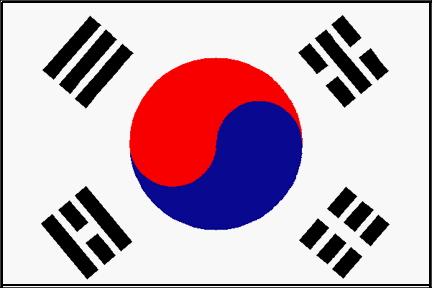Type 88 K1 Main Battle Tank
North Korea quantitatively leads South Korea in most classes of military equipment, such as number of personnel, tanks, artilleries, tactical missiles and operational aircraft. However, the South is qualitatively considerably stronger. It operates modern tanks such as the Hyundai-built Type 88 introduced in 1988, compared to North Korea's T-62, which made up the major component of the former Soviet Union's tank force during the 1970's.The K-1 rolls across the ground on hard rubber tracks at 40 miles per hour. Its crew sits inside a four-inch thick aluminum alloy shell. It can carry forty-six 105 mm shells that scream out of the canon to a range of 30 kilometers. The laser sighting system guarantees the highest level of accuracy in any conditions. This "hunt or kill" targeting system can even account for wind velocity. The targeting system is proven to be perfect between 400 and 8,000 meters.
The South Korean Type 88 K1 Main Battle Tank, which was developed indigenously, is system-integrated in Korea by Hyundai Precision using major components from several different countries. Ssangyong Heavy Industries' military diesel engines for K1 tank are manufactured under license from MTU of Germany. In May 1996 Hughes Aircraft Company awarded a contract to Kuchera Defense Systems to manufacture electronic assemblies for programs such as the the Korean K-1 Tank Program. Deliveries of the 105-mm K1 to the South Korean army were completed in 1997. Hyundai has also successfully undertaken the development of the K-1 Armored Recovery Vehicle and Armored Vehicle Launched Bridge both based on the K-1 main battle tank. In 1997 Malaysia announced a plan to purchase about 210 tanks worth $730 million by the end of the century. Hyundai Precision offered to sell 105 mm K1 tanks. Its competitors are Poland"s T-72 and Germany"s Mark 3 (M).
Hyundai is continuing to develop, upgrade and enhance the range of defense products it manufactures by using the experience acquired through the development and production of the 88 tank and other vehicles. The first K1A1 tank with 120 mm main armament rolled off the production line at Hyundai on 03 April 1996. The K1A1 features various enhanced functions compared to the existing K1 tanks, including a primary armament of double the penetration power. The new tank's 120mm gun can penetrate up to 600 mm thick armored vehicles while the old model's 105mm gun could only penetrate up to 300 mm. The effective firing range also has increased to 2 kilometers from the previous 1.2 kilometers. The development of the up-gunned 120mm K1A1 has been hampered by difficulties in updating the 120mm gun. Production of the K1A1 tank is set to start in early 2000.
Specifications | |
| Crew | 4 |
| Armament | |
| Armour | Composite |
| Length (including main armament) | 31ft 9in (9.67m) |
| length (hull) | 24ft 6in (7.48m) |
| width | 11ft 10in (3.60m) |
| height | 7ft 5in (2.25m) |
| Weight | 112,335 lb (51,000kg) [53.2 tons K1A1] |
| Ground Pressure | 12.23 lb/in sq (0.86kg/cm sq) |
| Engine | MTU 871 Ka-501 12 cylinder water-cooled diesel engine developing 1,200hp at 2,600rpm |
| Road speed | 40 mph (65km/h) |
| range | 310 miles (500km) |
| vertical obstacle | 3ft 4in (1.0m) |
| trench | 9ft 0in (2.74m) |
| gradient | 60� |

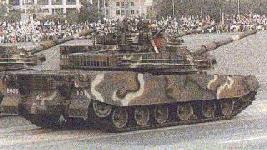
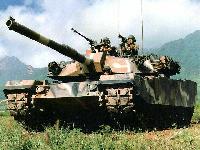
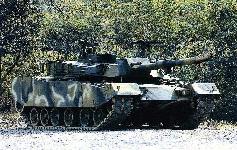
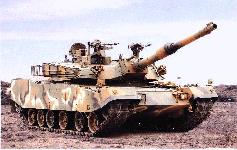
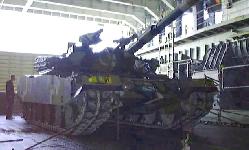
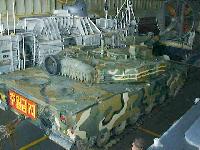


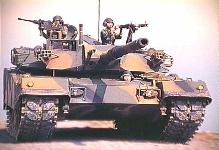
Sources and Resources
- K1A1 MBT @ Yang's military world
- Panzer Master in Hangul - photos of South Korean military equipment including the K1A1 Main Battle Tank.
- "Strengths, Weaknesses of Defense Industry Examined" FBIS-EAS-97-217 : 5 Aug 1997 [Seoul CHUGAN MAEGYONG in Korean 28 May 97 pp 13-20, 26-29]



